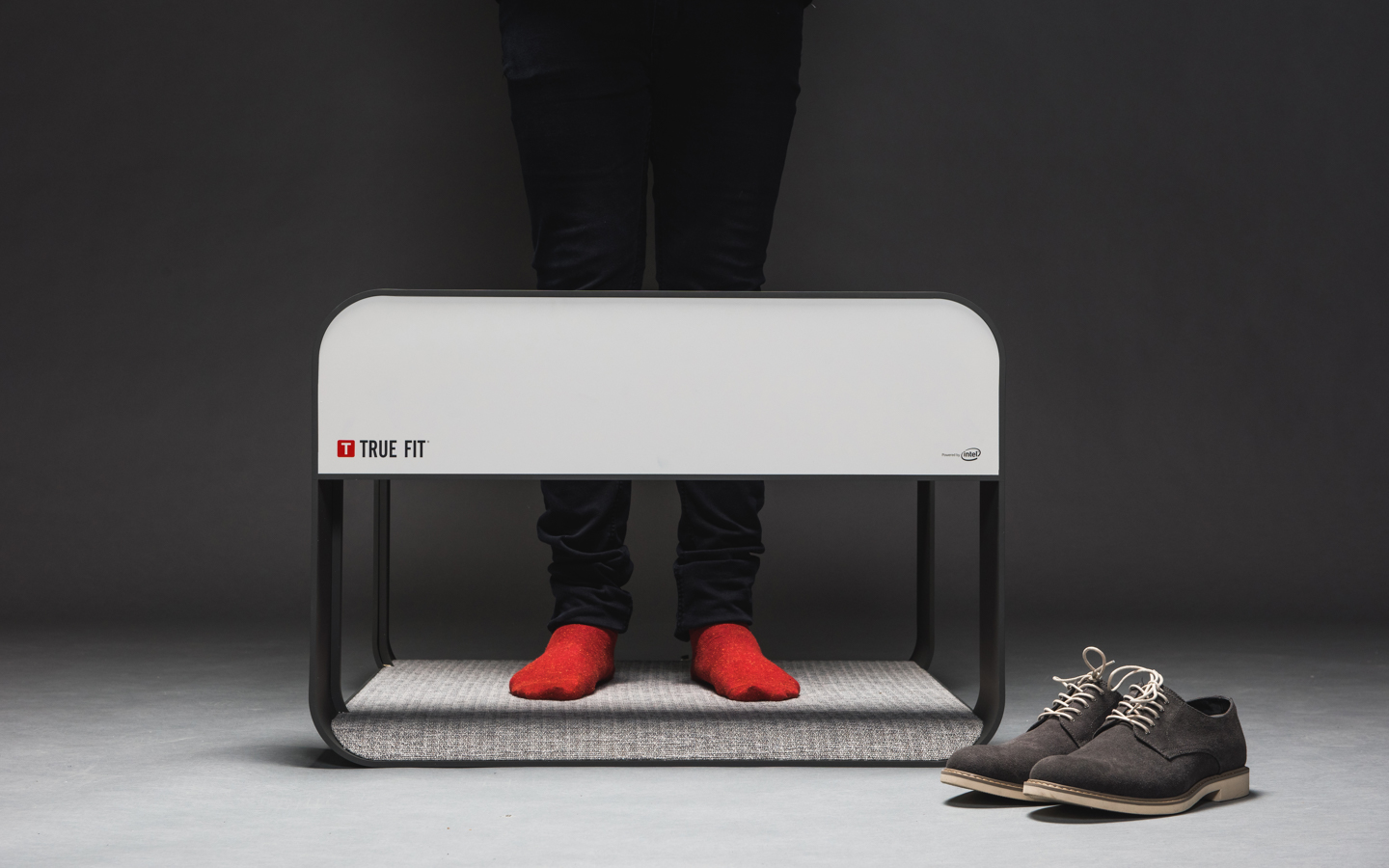
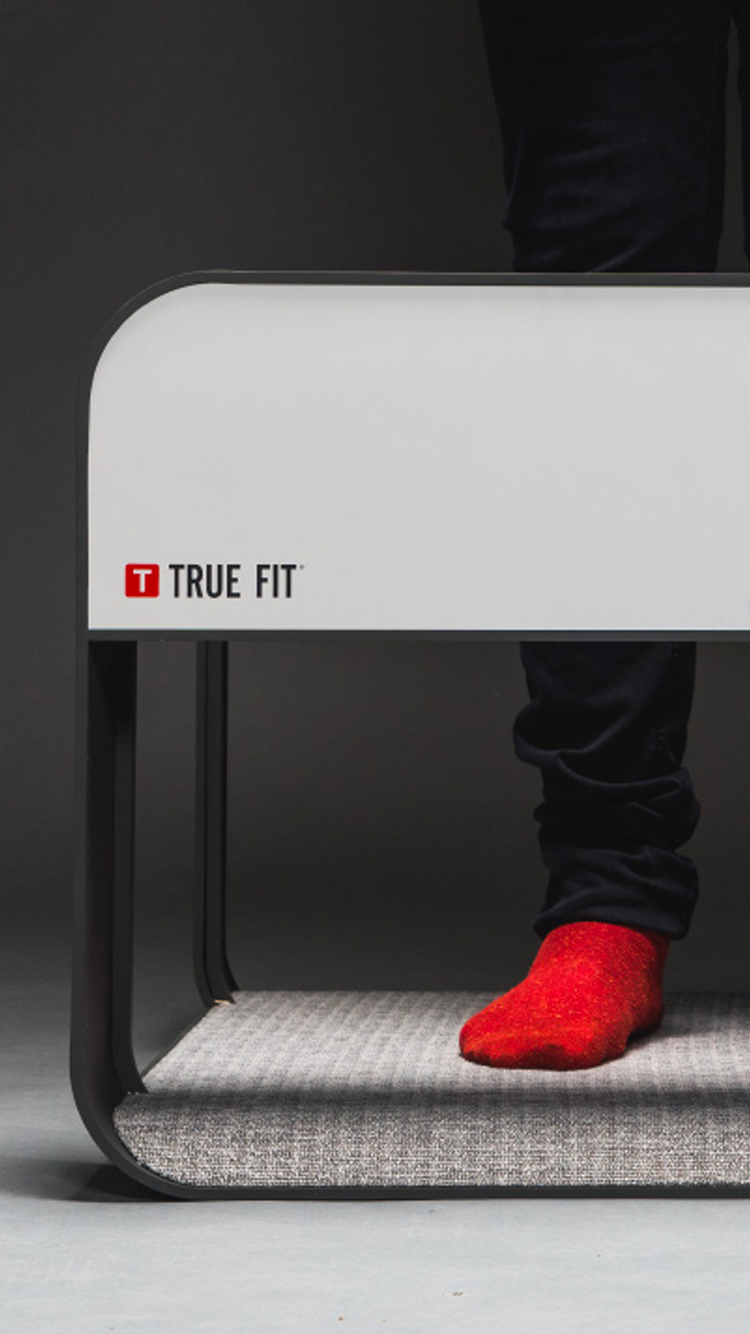
Intel RealSense
Foot Scanner
The evolution of online shopping brings about continual improvement in customer service. Logistics can make or break the customer experience and it’s important to get consumers what they want. In the case of footwear, it’s the correct fit the first time. With this in mind, an innovation team at Intel (a team that evangelizes Intel products by seeking partnership opportunities to disrupt new markets) wanted to develop a customer measurement tool for shoes and boots.
Intel teamed up with Tactile to conceptualize a four-camera foot scanner using Intel’s RealSense™ camera technology. It would be used to obtain foot and leg measurements within a retail environment.
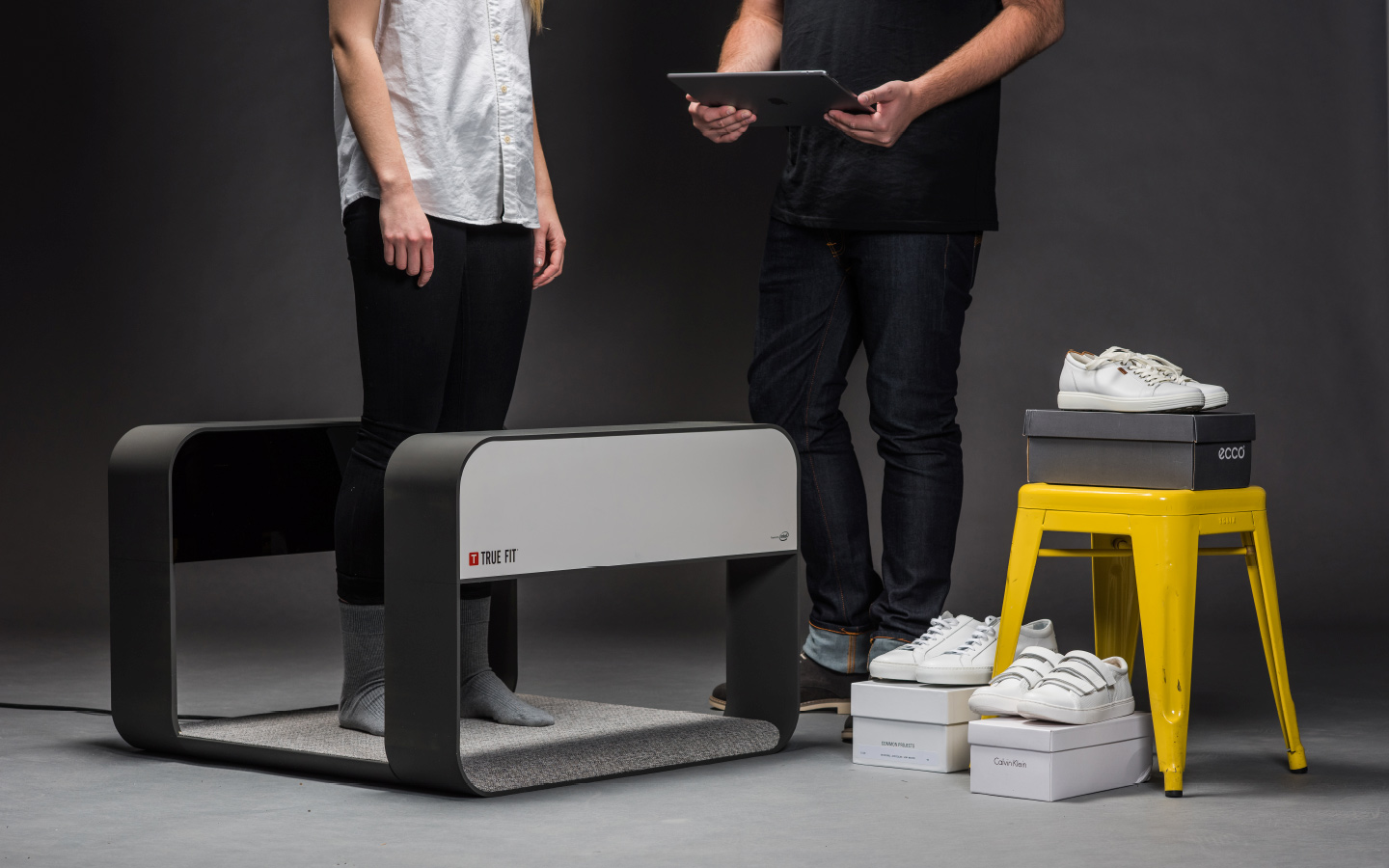

Thinking On
Our Feet
Using Intel’s consumer research, our design team identified two user experience architectures for using the foot scanner: (a) a sales-assisted model that’s a guided experience with an expert user, and (b) an unassisted, self-service experience where customers interact with an attached touchscreen or remote device. Knowing that brick and mortar retailers are looking to elevate the physical shopping experience, Intel opted to pursue the sales-assisted model.
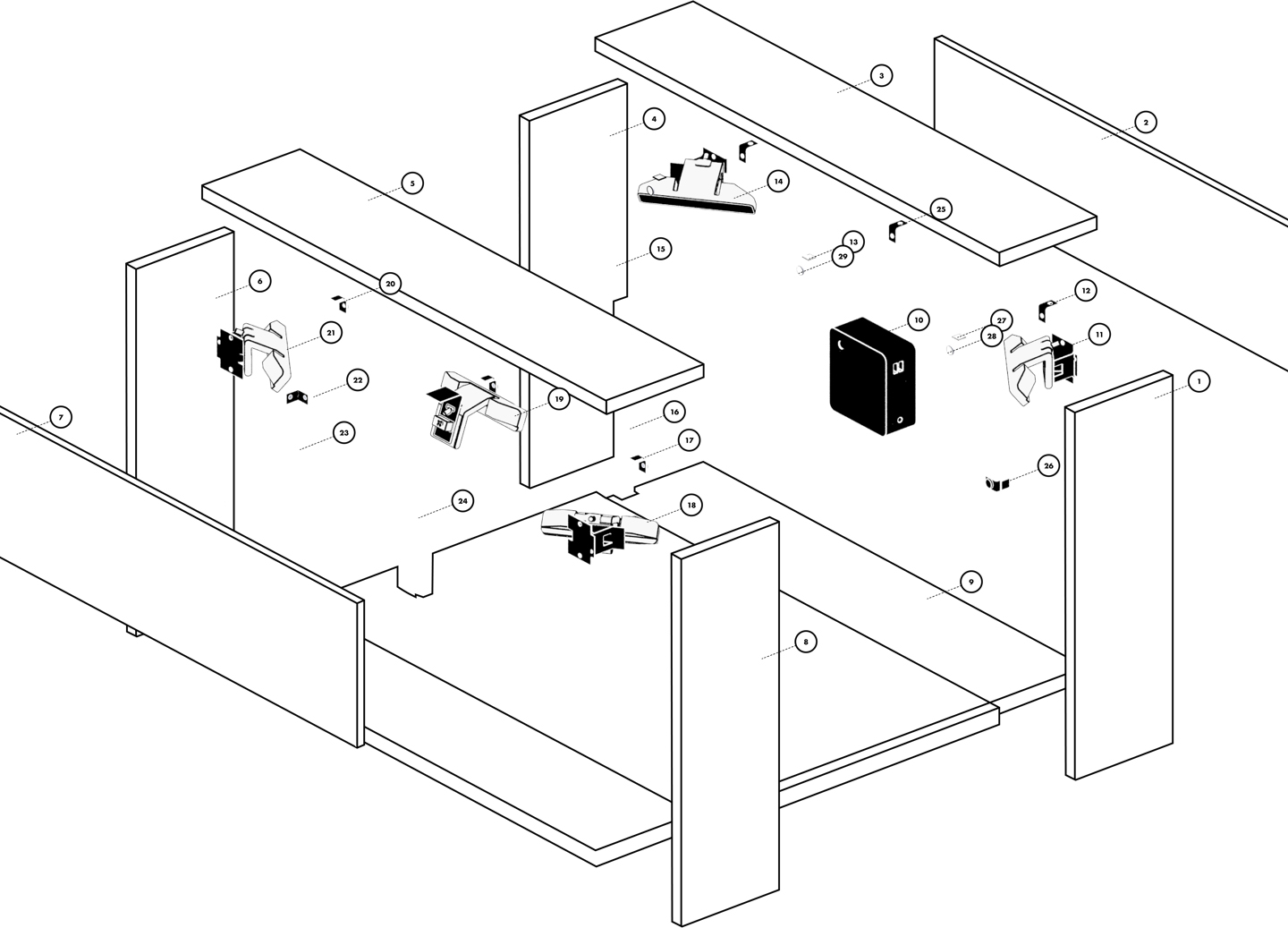

Proof of
Concept
Intel wanted a functional proof of concept to demonstrate the RealSense technology at trade shows. Tactile designed a fully functional prototype, which needed to provide the proper strength and overall design validation, while minimizing the weight for transportation to retailers and exhibitions.
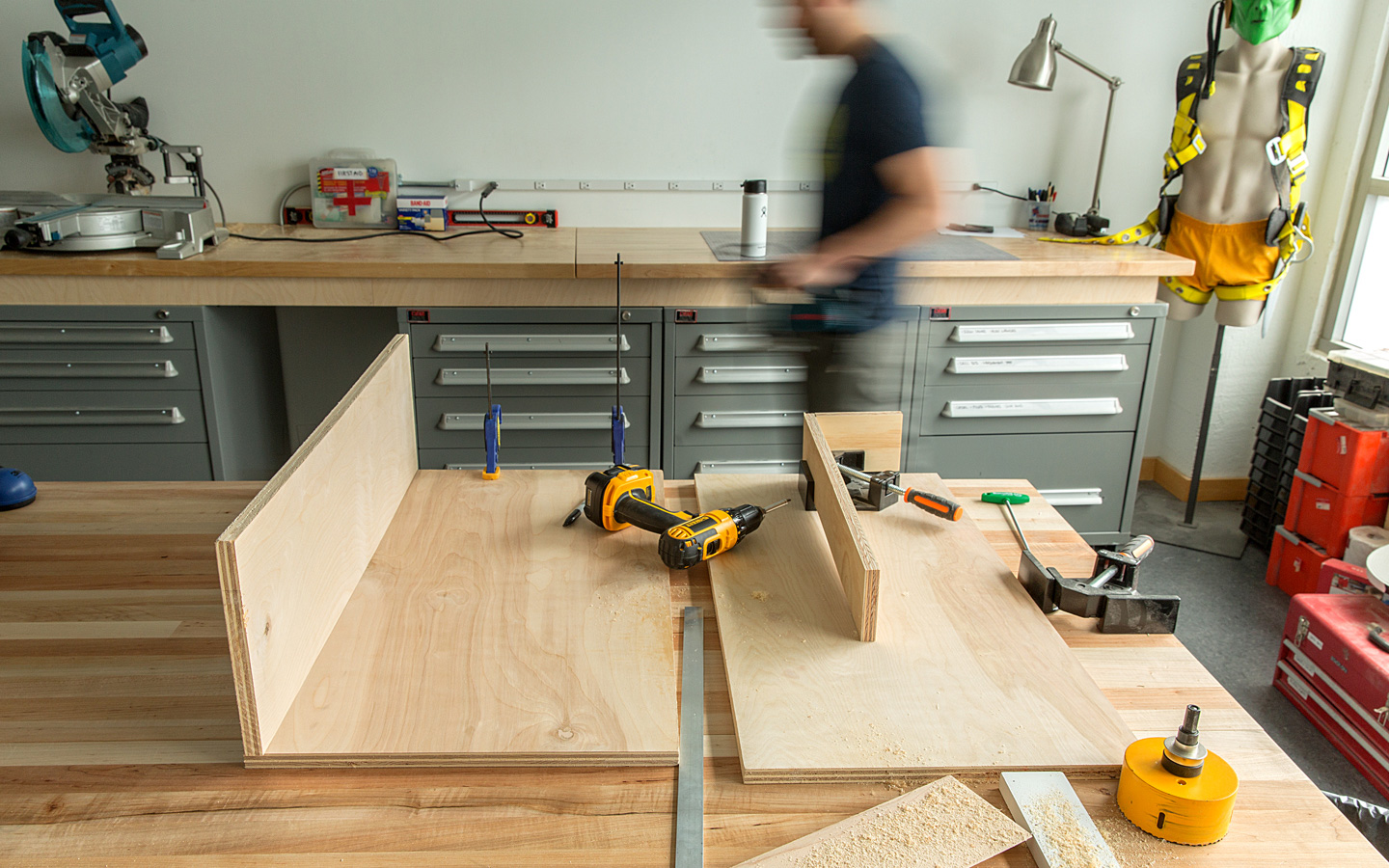

The Right Steps
Tactile’s deep expertise in engineering and design led the team through building product mock-ups, structural analysis on the proposed design—to ensure it would be safe for a retail environment—and used CAD simulation to accurately position cameras. The color, materials and finishes (CMF) were developed with durability in mind, something that’s critical in a retail environment.
The design team conducted retail environment research to help inform the CMF and since retail environments vary, the foot scanner is designed as a skeleton that can be customized for different environmental aesthetics.
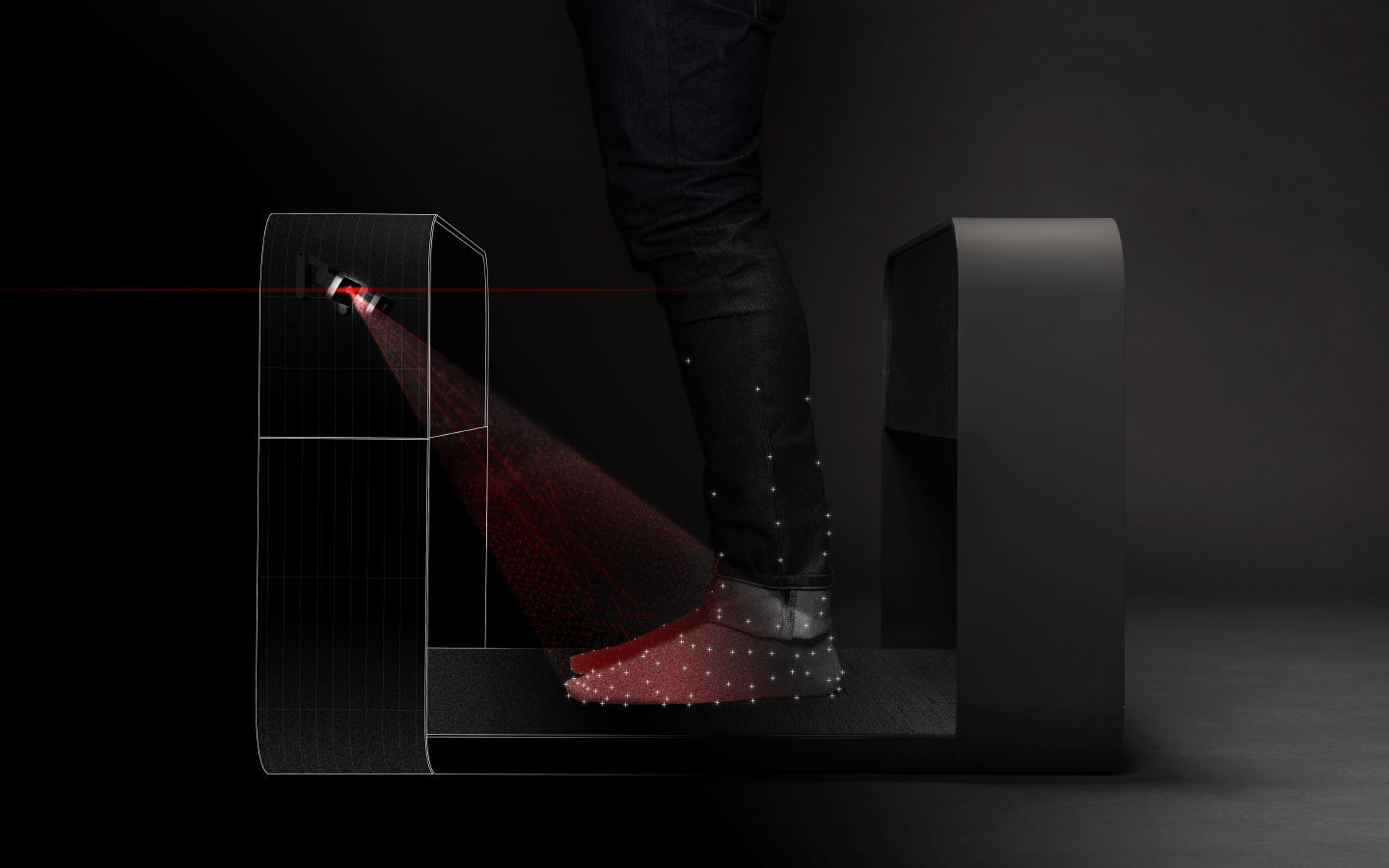

360° 3-D imaging
The main structure is made of aluminum, while the front and back panels are infrared plastic, which obscure the visual appearance of the cameras while allowing the foot scan to take place. The base can be finished with two types of fabrics: open pile carpet or closed cell foam.
Designed to feel approachable, the Intel foot scanner has two cameras on each of the front and back housings, which captures a 360-degree image of a customer’s legs from the knees down and feet.
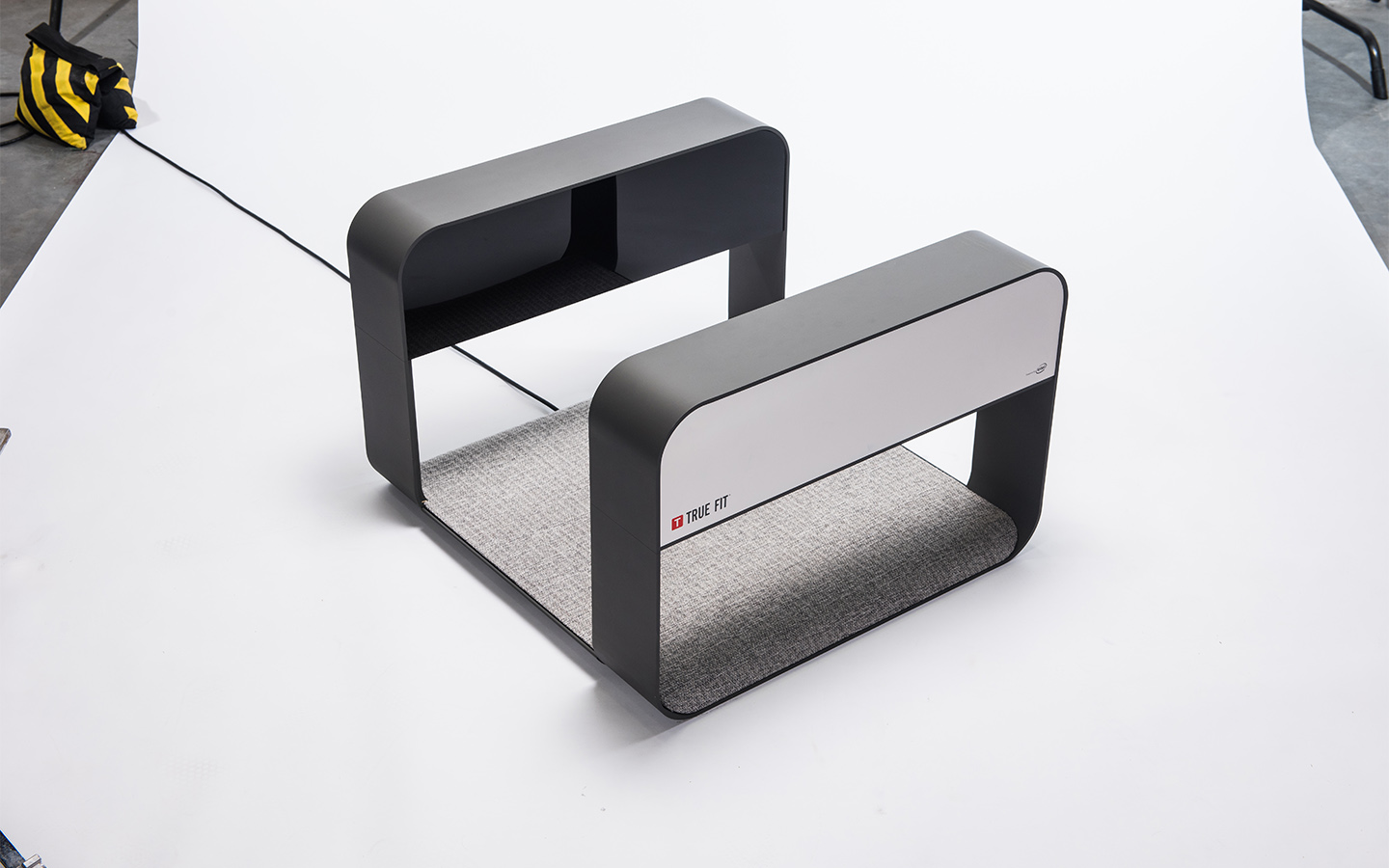

Step Into
the Future
Intel aims to disrupt the retail industry with the foot scanner. Retailers who use this technology will gain competitive advantage and consumers will have a better shopping experience. The data is meant to inform and streamline purchasing for customers while lowering return rates, thereby decreasing the overall environmental impact of the online retail experience. The Intel foot scanner was unveiled at the 2017 National Retail Federation Big Show.
